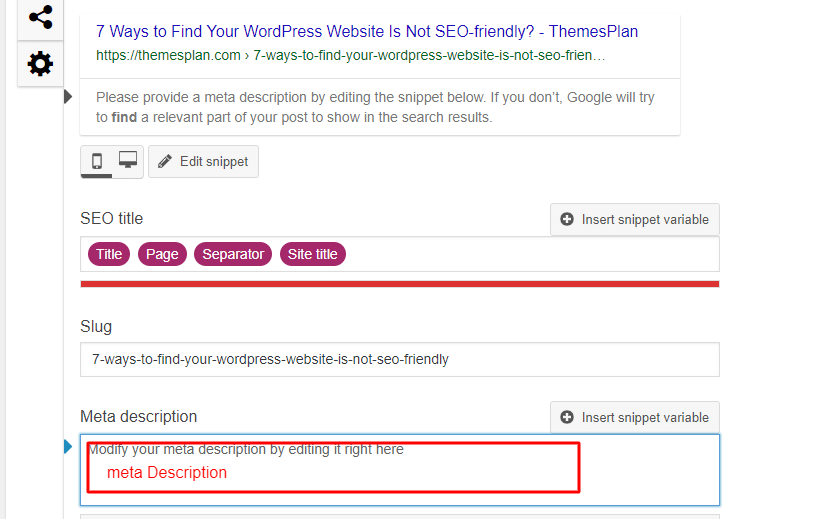Discover the top 7 strategies to find your WordPress website effortlessly. From advanced search engine optimization techniques to effective plugins and tools, explore proven methods to enhance visibility and streamline the process of finding your WordPress site.
Imagine you’re a nice WordPress, yet didn’t make companions with SEO? That is all right Google look calculations are changing constantly, and once in a while, it’s difficult to stay aware of the rankings. In this article, we’ll give you a handle on this inconvenience and investigate 7 cautioning signs your WordPress site isn’t SEO-friendly.
What precisely is SEO? SEO Optimization or Search Engine Optimization or SEO is a difficult activity focused on expanding your site visibility on Google. The higher you jump on that page list, the more traffic you get. Ultimately, SEO is all that you do to make a site with appropriate Google-friendly content so it better assesses your venture.
The best WordPress SEO plugin is Yoast SEO. It’s widely revered for its comprehensive features and ease of use.
7 Ways to Find Your WordPress Website Is Not SEO-friendly?
1. Loading Time

Have you at any point experienced visiting a site that had a turtle speed? You faced it.
There is a solution for such cases, or it’s smarter to state a plugin. WP Smush is without a doubt the most elite among image optimization plugins. It can resize and compress your images just as removes all the extra hidden image information. Smush is fit for dealing with JPEG, PNG, and GIF formats without compromising the quality of pictures.
2. Responsive Design

Individuals are using them for everything and above all else for surfing the web. Over half of the web, the user begins their inquiry using telephones as compared to desktops since it’s simpler and more efficient. Open a non-mobile-friendly site on your mobile and see time how long you’re willing to spend.
3. URL Structure
When in doubt, the URL of every one of your pages ought to reflect. It must include significant information about its content, so the visitors, yet search but also, can appreciate the information appropriately. Google crawlers “read” the connections simply like you and I would peruse article titles choosing whether their value is further inspected or not. You can make this activity simpler for the majority of your guests by essentially ensuring that, above all.
Furthermore, I would highly recommend using the Yoast SEO Plugin if you need to improve your WP performance.
4. Keywords Stuffing
Google and other web search tools focus on the number and nature of the keywords you use. That is one of the elements with the assistance of which crawlers “read” your site. About 10 years back, when the SEO columns were in the beginning time of raising, keyword stuffing was a well-known strategy to turned out to be progressively noticeable in the web world. Around then, the SEO algorithms were crude and the comparative keywords embedded actually near one another might be the great call to make.
Word Counter tracks your article keywords, as well as the long-tail ones. It checks its number in this manner it’s such a great amount of simpler to control your content stream. Likewise, the previously mentioned Yoast SEO Plugin with all its heavenly recommendations can give you a turn in the entire keywords circumstance.
5. Meta Descriptions

Meta Descriptions are the small summaries of your posts.
How would you realize you’ve written a good meta description? All things considered, as a matter of first importance, it must be no longer than 320 characters. If your description goes above the mentioned character, Google will cut it.
6. Title Tags

Title Tags are the blue features of your posts that are shown on the result pages. The same as the Meta description, they provide web crawlers with the general data on what you represent considerable authority in. It is generally short, as Uncle MOZ says up to 60 characters, according to the title of your post, and if it’s the landing page.
7. Duplicate Content
Accordingly, what would you be able to do to avoid the event of copy content? Use 301 Redirects to give the crawlers the correct connection to assess. If every one of the duplicates is diverted to the first connection, it gets the ranking and the day is saved. An additional great method to use is rel=”canonical”.
Conclusions
As every one of the signs referenced, I accept there are numerous ways you may improve to build your SEO score. A significant number of them could have been excluded while building a web project, some of them look irrelevant both for the experienced client just as the web. Remembering the tips portrayed, I trust you’ll have the capacity to create a considerably more vigorous SEO plan lastly master Google’s heart.
